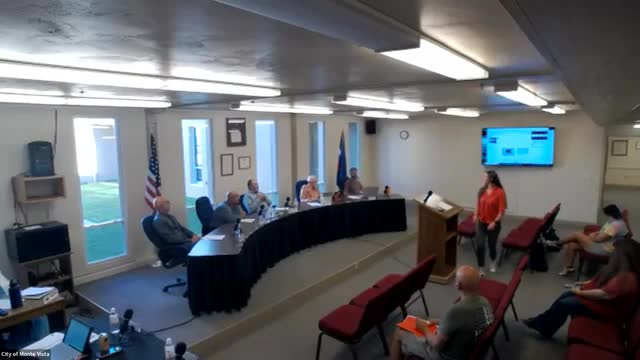Community initiative fights light pollution to restore night skies
August 19, 2024 | Monte Vista, Rio Grande County, Colorado
This article was created by AI summarizing key points discussed. AI makes mistakes, so for full details and context, please refer to the video of the full meeting. Please report any errors so we can fix them. Report an error »

In a recent meeting, Danny Robin, the community outreach manager for San Luis Valley Great Outdoors (Esseliko), presented a compelling case for a dark sky initiative aimed at preserving the natural night skies of south-central Colorado. The initiative seeks to combat light pollution, which has become a growing concern, affecting not only the visibility of celestial bodies but also the ecological balance and public health.
Robin explained that dark skies are areas with minimal artificial light interference, which is crucial for maintaining the region's quality of life, protecting wildlife, and enhancing public safety. He highlighted alarming statistics, noting that 80% of North Americans can no longer see the Milky Way due to light pollution, which is increasing at a rate of 10% per year.
The presentation outlined several key reasons for the initiative's importance. Firstly, it emphasizes the cultural and historical significance of the night sky, which has been a source of inspiration and navigation for countless generations. Secondly, the ecological integrity of nocturnal wildlife, which relies on natural darkness for survival, is at risk due to excessive artificial lighting.
Robin also addressed the environmental impact, pointing out that poorly directed lighting leads to energy waste, which could be mitigated through the adoption of dark sky-friendly lighting solutions. Furthermore, he discussed the health implications of artificial light, linking it to sleep disorders and potential cancer risks due to disrupted melatonin production.
Lastly, Robin challenged the common belief that more lighting equates to increased safety, citing studies that show no clear correlation between higher light levels and reduced crime rates. Instead, he advocated for responsible lighting practices that minimize glare and light trespass, ultimately enhancing public safety.
The dark sky initiative represents a multifaceted approach to addressing light pollution, with the potential to enrich community life, protect the environment, and promote public health in the San Luis Valley.
Robin explained that dark skies are areas with minimal artificial light interference, which is crucial for maintaining the region's quality of life, protecting wildlife, and enhancing public safety. He highlighted alarming statistics, noting that 80% of North Americans can no longer see the Milky Way due to light pollution, which is increasing at a rate of 10% per year.
The presentation outlined several key reasons for the initiative's importance. Firstly, it emphasizes the cultural and historical significance of the night sky, which has been a source of inspiration and navigation for countless generations. Secondly, the ecological integrity of nocturnal wildlife, which relies on natural darkness for survival, is at risk due to excessive artificial lighting.
Robin also addressed the environmental impact, pointing out that poorly directed lighting leads to energy waste, which could be mitigated through the adoption of dark sky-friendly lighting solutions. Furthermore, he discussed the health implications of artificial light, linking it to sleep disorders and potential cancer risks due to disrupted melatonin production.
Lastly, Robin challenged the common belief that more lighting equates to increased safety, citing studies that show no clear correlation between higher light levels and reduced crime rates. Instead, he advocated for responsible lighting practices that minimize glare and light trespass, ultimately enhancing public safety.
The dark sky initiative represents a multifaceted approach to addressing light pollution, with the potential to enrich community life, protect the environment, and promote public health in the San Luis Valley.
View full meeting
This article is based on a recent meeting—watch the full video and explore the complete transcript for deeper insights into the discussion.
View full meeting
